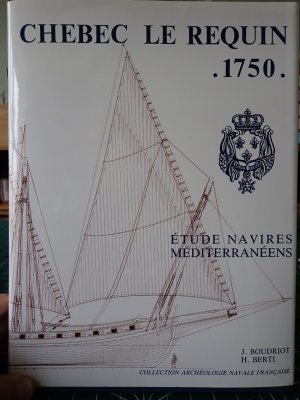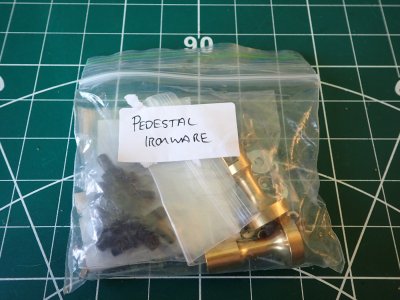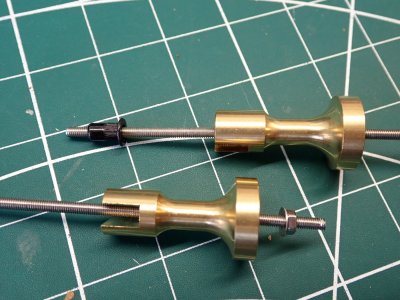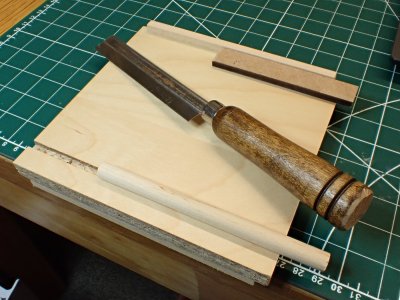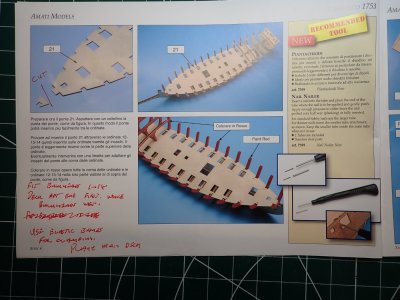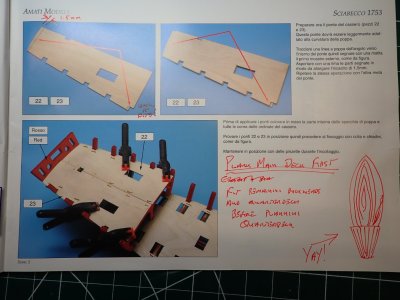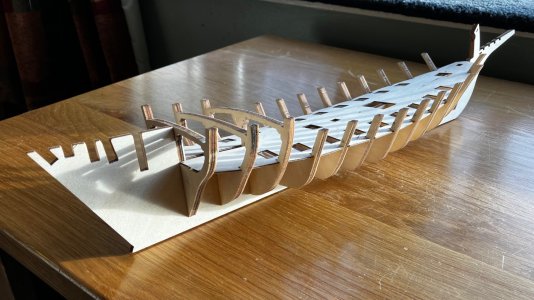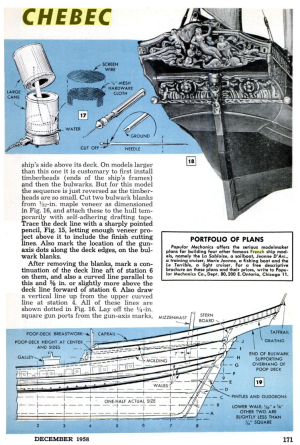The game's afoot!
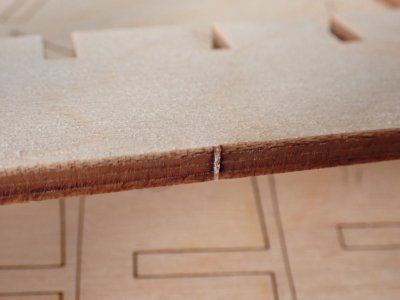
Let's have a close look at that thick piece of plywood that contains the keel and bulkheads. The laser cutting is superb. Hardly any charring, almost no chamfer and the retaining pips are tiny. It's also good plywood, with no voids or other anomalies noted today. The surface layers let it down a bit though, being a bit woolly. Most of it will be painted, so I'll be able to lay it on thick and hope that works out OK.
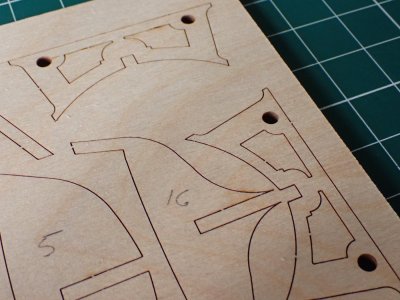
I was pleased to see that there's a stand included. This wasn't mentioned in the manual and I'm now considering using this instead of faffing around with the pedestals and buying a pretty piece of wood for the actual base. Does this cheap'n'cheerful build rate a base that could easily cost more than the kit? I have until next session to decide because that's when I'll be gluing up the keel.

This is what I mean by cheap and cheerful. This is one of three bulkheads which includes a pillar and beam to support the quarterdeck and it's quite primitive, very flat. There are many modellers in SOS who would cut the pillar and the brackets away and turn new ones with their computer controlled lathes. I'd have to do it with a power drill and improvisation but again, is the game worth the candle in this case? Nah, not really.
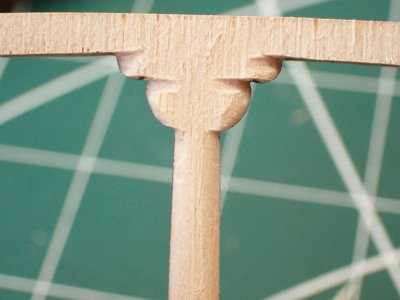
I sanded and filed instead and made the things look tons better while still being a bit shabby. There are three of these but they are mostly in the shadow of that upper deck so this will have to do. I'm just not that bothered about getting everything right. You can call it a character defect if you like but I can't deny that I've always been 'a bit of a gash hand'. I get the job done to the minimum acceptable (to me) standard with the minimum of cost and effort.
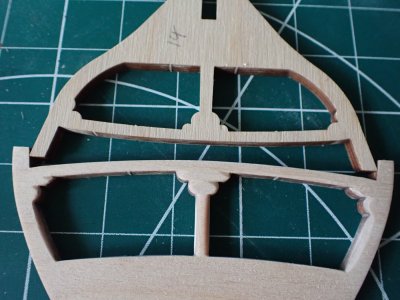
That said, by my standards, the improvement is pleasing.
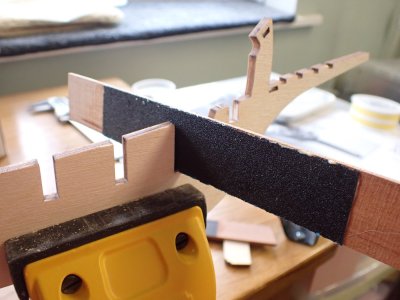
Those perfectly lasered slots were a little too good. Had the kerf been half a mil wider, everything would have fitted perfectly. Maybe the designer expected the production guys to be a bit more like me! As it is, every slot had to be widened just a little bit. That's 40 slots. I began by making a suitable sanding stick.
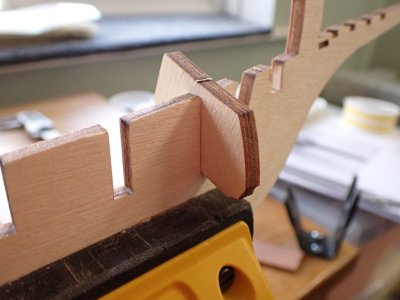
I used a scrap piece from the fret as a gauge to save wear and tear on the bulkheads, some of which are quite fragile looking. This was taking aaaaaages and driving me nuts. How do you POF builders cope with months of building frames? An hour of tickling these slots drove me over the edge. I switched to using a great big file and forgot about the gauge altogether. "Hack hack, that'll do!"
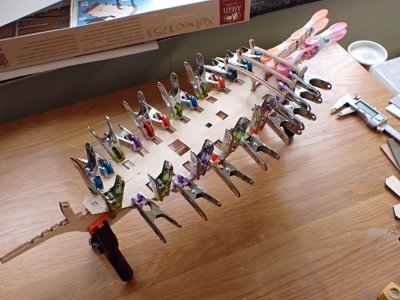
It all came together in the end and the sub-deck worked well as a jig, despite being a little skinny in the beam which is going to cause trouble for me later...
I had to soak the deck in hot water to soften it enough to take on the saddleback curve and I'll leave it pegged in position for a day or two to fully dry. I plan to nail it down the centreline, leaving the nails in, and then glue the rest of it together with slightly diluted Titebond and capillary action. There's no need to dismantle this just to get glue right into the centre of the joints - it's not a real boat.
Note the pink/orange pegs at the back which I had to use in the spreading mode to push the dek down from above. I'm pleased with that arrangement which I cobbled together at very short notice. Getting the job done at least possible cost and effort. Ha!
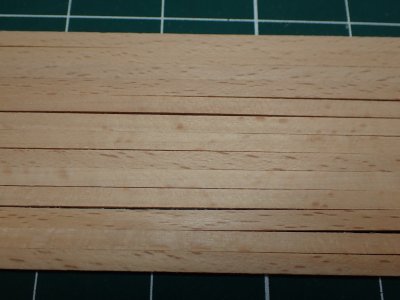
This is the supplied beech deck planking. It's ok. Perhaps the flecks are a bit overscale? It's hard wood and 1.0mm thick by 3.5mm wide. Nope! Don't like it, won't use it! I want more bling. I'm assuming this was a ship built for a Muslim pirate warlord from the Barbary Coast, and I think a guy like that would appreciate some geometrical decoration. I've seen a drawing somewhere of a xebec with the deck planks curved around the bulwarks and maintaining the curves as they march to the centerline like a mirror matched parquetry pattern. That's what I'm going to attempt.
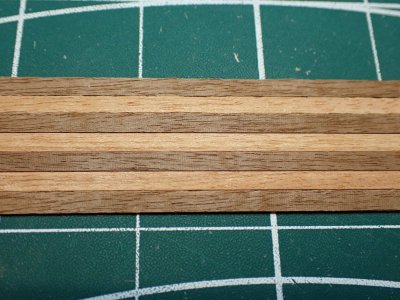
I'll be using these timbers alternately. The dark one is walnut and the lighter one is anybody's guess, possibly a different sort of walnut. They are both 3mm wide which is handy, though I wouldn't have baulked at pinstriping, and at only 0.5mm thick, they will bend like hot spaghetti. I'm not bringing the pattern all the way to the centreline because the tiniest athwartships error would make a big lateral mismatch and the slightest mismatch would look pants. Instead, I'll run a few planks in another wood straight down the middle, possibly making them thicker in the manner of a king plank for strength.
That will be more fun than filing thousands of slots 0.1mm wider all day!
So now you know what I'm going for, there's no backing out. My colours are firmly nailed to the mast.



